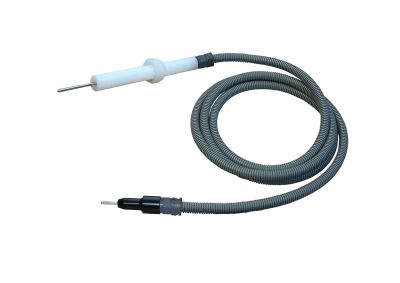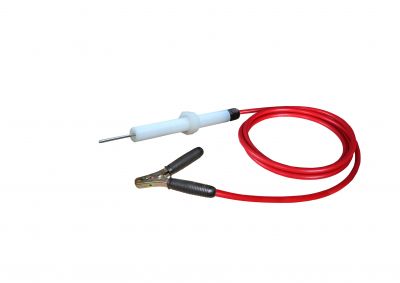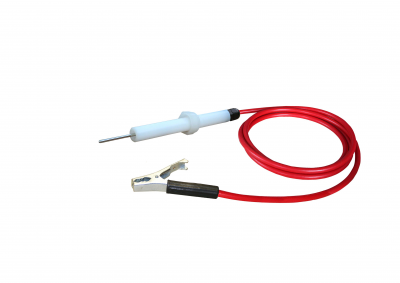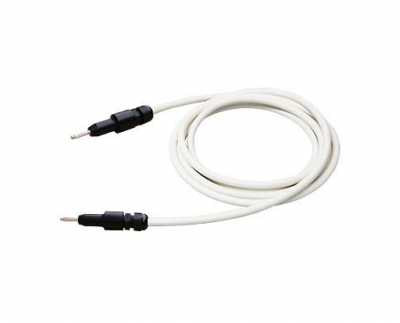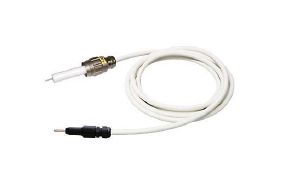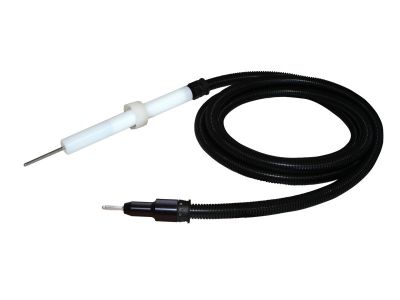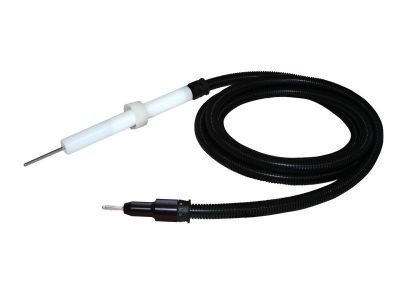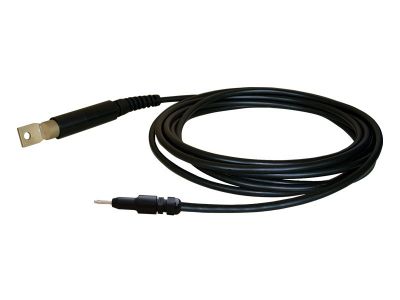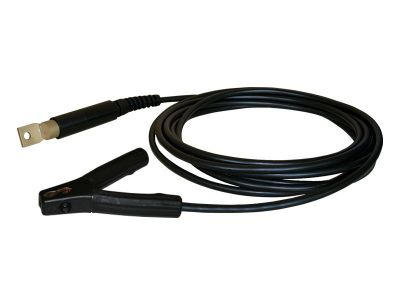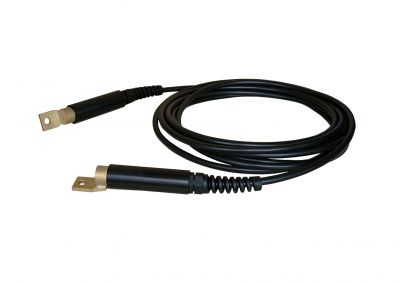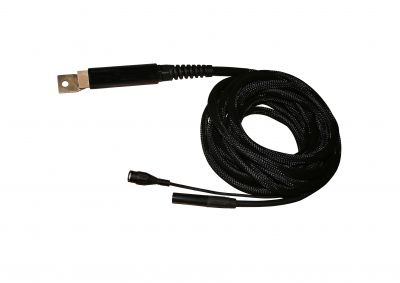Certyfikowany system zarządzania jakością
Testery wysokiego napięcia a także klatki testowe, manekiny testowe, kable i wiele więcej
Wytrzymałe testery wysokiego napięcia do testowania zdolności izolacji elektrycznej i wytrzymałości dielektrycznej można znaleźć tutaj. Wszystkie urządzenia testery wysokiego napięcia są idealne do bezpiecznego testowania wysokiego napięcia, zarówno w produkcji, jak i w laboratorium, na przykład do badania typu.
Kup teraz online testery wysokiego napięcia:
- HV-Cable, single-pole, in conduit
- Length 2,5 m
- 16 kV AC / 22 kV DC, max. 10 A
- Single-pole, in conduit
- Length 2,5 m
- HV-plug HIRAT
- 16 kV AC / 22 kV DC, max. 10 A,
- HV-Cable, single-pole
- Length 3 m
- HV-plug HIRAT
- 16 kV AC / 22 kV DC, max. 10 A
- HVC25N-02
- Length 2 m
- HV-plug HVC100KS-KS02 with HV connector HVP25N
- 25 kV AC / 35 kV DC, max. 10A
- HVC25N-B02
- Length 2 m
- HV-plug HVC100KS-KS02 with HV connector HVP25N and lamella plug
- 25 kV AC / 35 kV DC, max. 10A
- HV-Cable, one-pole
- Length 2 m
- HV-plug HVC50KS-B02
- 50 kV AC / 70 kV DC, max. 10 A
- HV-Cable, one-pole
- Length 2 m
- HV-plug HVC50KS-KL02 with contact clamp
- 50 kV AC / 70 kV DC, max. 10 A
- HV-Cable, one-pole
- Length 2 m
- HV-plug HVC50KS-KS02 with 2 solid cable shoe
- 50 kV AC / 70 kV DC, max. 10 A
- Max current: 32A AC
- Length: 2 m
- PE test lead, 2-pole
- Source path with 6mm plug for insertion to the device
- Sense path with BNC-plug for insertion to the device
- Max current: 32A AC
- Length: 5 m
- PE test lead, 2-pole
- Source path with 6mm plug for insertion to the device
- Sense path with BNC-plug for insertion to the device
- Max current: 32A AC
- Length: 10 m
- PE test lead, 2-pole
- Source path with 6mm plug for insertion to the device
- Sense path with BNC-plug for insertion to the device
Testery wysokiego napięcia określają wytrzymałość izolacji i odporność na napięcie
Przy pomiarze odległości obowiązuje w przybliżeniu zasada: 1000 V = 1 mm odstępu. Testery wysokiego napięcia stosowane w testach jednostkowych zgodnie z normami VDE mają zazwyczaj napięcia do ok. 6 kV.
Alternatywnie dostępne są specjalne testery i systemy wysokiego napięcia o napięciach 7 kV, 10 kV, 12 kV, 14 kV, 20 kV, 30 kV, 50 kV, 100 kV, 150 kV i 300 kV, a także wartości pośrednie. Testery wysokiego napięcia tej klasy są wyjątkowo wydajne i stosowane głównie w dużych polach testowych oraz w przemyśle kablowym. Do standardowego wyposażenia testerów należą: pistolety testowe, sterowanie dwuręczne, klatki testowe, lampy ostrzegawcze HV oraz tabliczki „Uwaga: test wysokiego napięcia”. Elektroniczne testery wysokiego napięcia mogą być wygodnie sterowane i odczytywane za pomocą oprogramowania ST®Meter lub Data View – standardowo przez USB, LAN, CAN-Bus lub RS232. Do montażu w systemach testowych 19” dostępny jest zestaw montażowy.
Tester wysokiego napięcia Sourcetronic ST9201
W tym filmie zaprezentowano tester wysokiego napięcia ST9201, jego funkcje i warianty.
Jak działa test wysokiego napięcia?
Test wysokiego napięcia przeprowadza się w urządzeniach klasy ochrony I (z przewodem ochronnym PE) i klasy ochrony II (bez przewodu PE). W ten sposób sprawdza się, czy izolacja przewodów pod napięciem oraz odstęp bezpieczeństwa od obudowy spełniają wymagania.
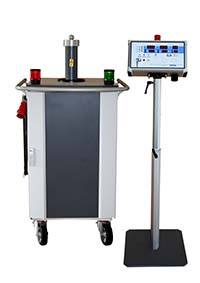
Test HV jest zasadniczo „DOBRY”, jeśli nie płynie żaden prąd. Przy teście wysokiego napięcia AC na obiekcie o charakterze pojemnościowym popłynie jednak niewielki prąd. Dlatego większość testerów wysokiego napięcia ma możliwość regulacji prądu testowego. Jako wartość orientacyjną dla napięcia przy teście HV przyjmuje się podwójne napięcie znamionowe badanego urządzenia plus 1000 V. Dla urządzenia 230 V będzie to: 1000 V + 2 x 230 V = 1460 V (≈1500 V).
Rozróżnia się testy wysokiego napięcia AC i DC. VDE (Stowarzyszenie Elektryki, Elektroniki i Techniki Informacyjnej) coraz częściej dopuszcza w zakładach produkcyjnych testy DC HV, które ze względu na brak częstotliwości są bezpieczniejsze dla człowieka, zwłaszcza dla serca. W zakresie bezpieczeństwa pracy obowiązują przepisy organizacji zawodowych (zgodnie z EN 50191). Nie ma potrzeby specjalnego zabezpieczania stanowiska, jeśli testuje się napięciem AC do 3 mA lub napięciem DC do 12 mA. Test HV DC ma więc tę zaletę, że do 12 mA nie są wymagane dodatkowe środki bezpieczeństwa.
Bezpieczeństwo pracy przy obsłudze testerów wysokiego napięcia:
a) Testy wysokiego napięcia z prądem: |>3 mA/AC lub |>12 mA/DC
- Specjalne pomieszczenie testowe HV lub
- Łańcuch, tablica ostrzegawcza, zestaw lamp ostrzegawczych, pistolety testowe / klatka testowa / sterowanie dwuręczne
b) Testy wysokiego napięcia z prądem: I - brak specjalnych środków ostrożności
- lub tylko środki zapobiegające „wtórnym wypadkom”, takim jak gwałtowne ruchy po porażeniu prądem
Testy wysokiego napięcia na obiektach z kondensatorami przeciwzakłóceniowymi lub kondensatorami typu Y mogą być przeprowadzane zarówno z prądem AC, jak i DC. Nawet w przypadku testów DC można dzięki pomiarowi prądu ładowania uzyskać informacje o zainstalowanym kondensatorze przeciwzakłóceniowym.
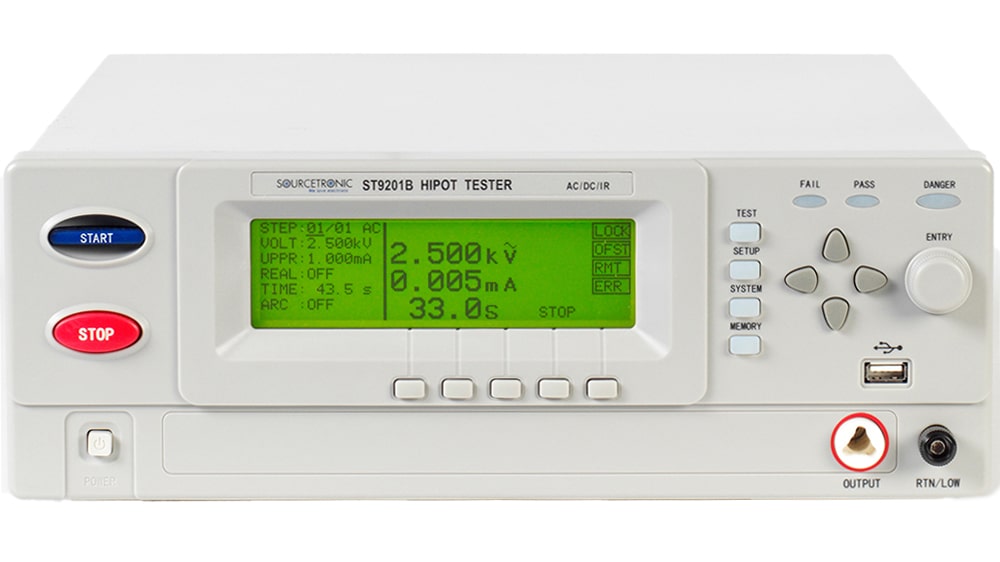
FAQ: Pomoc i wskazówki
Poniżej znajdziesz pomoc i wskazówki dotyczące testerów wysokiego napięcia, testerów i systemów wysokiego napięcia firmy Sourcetronic – od ogólnych pytań po szczegółowe informacje dotyczące poszczególnych typów urządzeń znajdziesz tutaj kilka najczęściej zadawanych pytań:
Jak wgrać aktualizację oprogramowania układowego do ST9201? Jak powinno być zabezpieczone stanowisko testowe wysokiego napięcia? Co oznacza ograniczenie prądu bezpieczeństwa?

